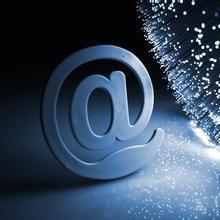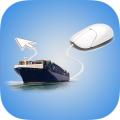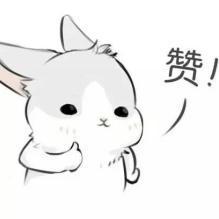Cross-border e-commerce, how to close the first order?
01
商品标题要亮眼
产品标题是用户看到的首条重要信息,好的标题能让用户第一时间知道这个商品是不是他所需要的。除此之外,标题里包含的关键词是直接参与亚马逊搜索引擎排序的,因此,好的标题是引流的关键。
一般来讲,商品的标题要注意这些点:
1. 标题里除去介词(in on with等)、冠词(the a an等)、连词(and or等),每个字的首字母必须大写,切忌全大写或者全小写;
2.标题中不要有公司促销、物流、运费或其他任何与商品本身无关的信息;
3.标题不要有特殊字符或商标符号,不要使用中文输入法内输入,不要拼写错误,表示单位时用单词而非符号,表述数字时用阿拉伯数字而非文字;
4.标题不能过长,核心关键词最好显示在前35个字符,不能有重复关键字,务必在两百个字符以内说清楚基本情况;
5.商品标题只写一种用途或兼容信息,其他的用途要在Bullet Points或Description里填写;
6. 非服饰类商品如果有不同颜色,需要单独创建新商品,品名里写清楚颜色,避免随机发货。
7.商标是必填项,并且应该放在标题的最前面;
8.产品的参数可以通过添加简单标签来进行描述,可以多写一些信息,如材质、尺寸、重量等。需要注意的是如果是按照重量计算快递费用可填写Shipping Weight
9.一般来讲,合格的标题组成是:产品核心关键词+商标+适用范围+产品参数(颜色、材质、重量等等)。
02
产品图片要吸睛
好的产品图片一般具有这两个作用:
一是能尽量覆盖更多的产品信息,准确的表达产品; 二是能够刺激客户的想象力,同时引起他们的购买欲望。那么什么样的产品图片可以吸引买家呢?
1.产品主图的打光效果要好,要在白色背景下突出产品的精美,这样才能令顾客印象深刻;
2.产品细节展示图和对比图不能有太多的文字,切忌在一张图上展现过多信息,可采用圆圈形式和放大镜的形式来作图展现。;
3.产品场景图主打简洁舒服就好,不建议使用太多的道具,这样才能更好的利用场景图来对比凸显产品;
4.产品尺寸包装图可以准确显示客户购买后会得到什么,因此要根据实际情况决定需要摆放的物件;
5.整套图片要逻辑。一套逻辑清楚的图片,可以让客户在短时间内读懂你的产品卖点。常见的方式是先着重展示自己的产品细节,然后再插入别人的对比图,再回到自己的使用场景从而来重点突出自己产品的优势;
6.图片整体要有调性。所有的图片都需要跟产品主题保持一致,讲述该产品可以解决的问题以及该产品针对哪些用户。另外,所有图色调也要和谐统一,尽量用一个色调。
03
产品描述要详细
产品描述要尽可能展现产品的颜色、尺寸、材质、承重、功能、使用场合等,越详细对产品曝光量越好。产品描述的优化一般包括两方面:内容和形式。
内容上,商家要学会用换行符号和加粗符号这两个标签符号,适当的加粗和巧妙地换行,能使产品描述详略得当,展现形式上更加完美。
形式上,产品描述要着重突出消费者们所关心的核心产品参数,注明包装的信息,强调产品品质保证和售后服务,除此之外,产品描述还可以讲述产品故事,制造品质背景,让消费者更有信任感。
04
产品优化要到位
优化是一项每天都需要进行的工作,因为listing的任何操作都是有可能影响到产品的曝光和排名的。一般来讲,listing的优化有一个固定的格式:品牌+核心关键词+特性+适用范围+属性等。因此,商家需要每天修改一下库存、丰富一下图片、修改一下关键字,从而确保关键词更加精准,描述内容更加贴切、完整。
Professional answer
01
The product title should be eye-catching
The product title is the first important information that users see. A good title can let users know at the first time whether this product is what they need. In addition, the keywords contained in the title are directly involved in the Amazon search engine ranking, so a good title is the key to attracting traffic.
Generally speaking, the following points should be noted in the title of the product:
1. Except for prepositions (in, on, with, etc.), articles (the, a, an, etc.), conjunctions (and or, etc.), the first letter of each word must be capitalized. Avoid all capital or lowercase letters.
2. The title should not contain company promotions, logistics, freight or any other information unrelated to the product itself.
3. The title should not contain special characters or trademark symbols. Do not use Chinese input methods to input. Do not make spelling mistakes. Use words instead of symbols to indicate units, and use Arabic numerals instead of words to indicate numbers.
4. The title should not be too long. The core keywords should preferably be displayed in the first 35 characters. There should be no repeated keywords. Be sure to state the basic situation within 200 characters.
5. The product title should only include one use or compatible information. Other uses should be filled in the Bullet Points or Description.
6. If non-apparel products have different colors, you need to create a new product separately, and write the color clearly in the product name to avoid random delivery.
7. The trademark is a required item and should be placed at the front of the title;
8. The parameters of the product can be described by adding simple tags, and more information can be written, such as material, size, weight, etc. It should be noted that if the express fee is calculated by weight, Shipping Weight can be filled in
9. Generally speaking, a qualified title consists of: product core keywords + trademark + scope of application + product parameters (color, material, weight, etc.).
02
Product pictures should be eye-catching
Good product pictures generally have two functions:
One is to cover as much product information as possible and accurately express the product; The second is to stimulate the imagination of customers and arouse their desire to buy. So what kind of product pictures can attract buyers?
1. The lighting effect of the main product picture should be good, and the exquisiteness of the product should be highlighted against a white background, so that customers can be impressed;
2. The product detail display picture and comparison picture should not have too many words, and it is forbidden to show too much information on one picture. Circles and magnifying glasses can be used to show the pictures. ;
3. Product scene pictures should be simple and comfortable. It is not recommended to use too many props, so that the scene pictures can be better used to compare and highlight the products;
4. Product size packaging pictures can accurately show what customers will get after purchasing, so the objects to be placed should be determined according to the actual situation;
5. The whole set of pictures should be logical. A set of logically clear pictures can allow customers to understand your product selling points in a short time. The common way is to focus on showing the details of your own products first, then insert other people's comparison pictures, and then return to your own usage scenarios to highlight the advantages of your own products;
6. The overall picture should have a tone. All pictures need to be consistent with the product theme, telling the problems that the product can solve and which users the product is aimed at. In addition, the tones of all pictures should also be harmonious and unified, and try to use the same tone.
03
Product description should be detailed
The product description should show the product's color, size, material, load-bearing capacity, function, and usage occasions as much as possible. The more detailed the product, the better the exposure. The optimization of product descriptions generally includes two aspects: content and form.
In terms of content, merchants should learn to use the two label symbols, line break and bold. Appropriate bold and clever line breaks can make the product description detailed and concise, and the presentation form more perfect.
In terms of form, product descriptions should focus on highlighting the core product parameters that consumers care about, indicate the packaging information, and emphasize product quality assurance and after-sales service. In addition, product descriptions can also tell product stories and create quality backgrounds to make consumers more trusting.
04
Product optimization must be in place
Optimization is a daily task, because any operation of the listing is likely to affect the exposure and ranking of the product. Generally speaking, the optimization of listings has a fixed format: brand + core keywords + features + scope of application + attributes, etc. Therefore, merchants need to modify inventory, enrich pictures, and modify keywords every day to ensure that keywords are more accurate and the description content is more appropriate and complete.
First, after your store places an order, find the Shopee Seller Center in the background to find the waiting-for-shipping section, select the waiting-for-shipping product, click Generate Shipping Number, and a page for applying for the shipping number will pop up. Then wait for three to five seconds, and the number application will be successful. Print the order number, download it to our computer desktop, and after the download is complete, open our order (pdf format) and print the order directly.
For printing paper, you can choose 100 by 100 printing paper, and then print out a Shopee delivery note. Then pack the products we sell, first put the products into bubble bags, and then stick the Shopee delivery note we printed on the bubble bags. The bubble bags prevent the products from being damaged midway, and then put the products with the delivery note into express bags.
On the outside of the sealed express bag, we put an address label of the Shopee warehouse we are sending to. This package is packed. After the package is delivered to the Shopee warehouse, the warehouse staff will help us unpack it, take out the bubble bag with the label inside, pack it, and stick a local logistics label. Then it will be sent directly to the customer.
In fact, the Shopee store is very easy to operate. You can treat the Shopee store as a sideline. You can spend two hours a day to collect products and upload them to the store, and then send some products ordered by buyers to the freight forwarding company, which will then pack them and send them to the Shopee warehouse. This is suitable for stores that do not have products and have no source of goods. If you have products, you can pack and label them yourself, and then send them to the Shopee warehouse.
You can adopt a low-price traffic diversion method, such as: buy and send activities. But if the customer unit price is too high, it is not suitable.
There are several aspects to consider when choosing gifts:
1. Gifts have a certain appeal to customers, that is, you can make your target audience want to get this gift. For example, McDonald's has a children's meal that includes hamburgers, juice and robot toys. Many children want it just because of the robots, and basically don't eat hamburgers or anything else.
2. Don't be too obsessed with the value of the gift. Since you have already made a product a gift, don't be too concerned about what has been given away. If the product the customer buys is not suitable, when they choose to apply for a return, the gift can be returned, which can deepen the good impression in the customer's mind.
The last one, the store can also quickly break zero by selling at a low profit margin, such as setting a new product freshness price, which takes advantage of the customer's desire to get a bargain, but if the price is low, the profit will be reduced, which requires the seller to control the discount.
In order to get your first order, you need to focus on creative and effective strategies to encourage people to place orders as soon as they enter your website
What qualifications are required to do cross-border e-commerce?
Similar Q&A
recommend I want to start my own business, how can I find a project?
E-c News Continuously pushing e-commerce knowledge to you


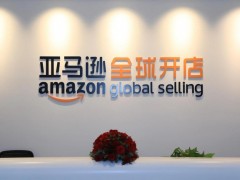
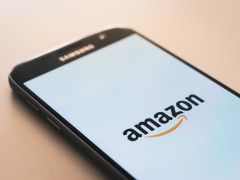
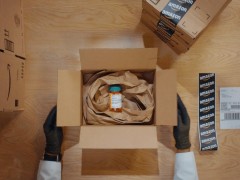
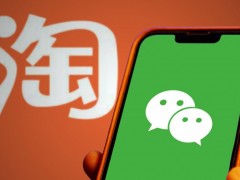
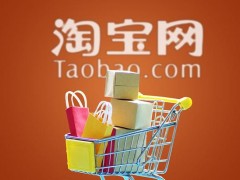

Latest Q&A More
-
Do I need a trademark to open a franchise store on Pinduoduo to sell books?
#Pinduoduo#
-
How to withdraw from a Pinduoduo store
#Pinduoduo#
-
How to withdraw from Pinduoduo merchants
#Pinduoduo#
-
How to pay fees when closing a Pinduoduo store
#Pinduoduo#
-
How to withdraw from Pinduoduo
#Pinduoduo#
-
Which store on Pinduoduo is authentic?
#Pinduoduo#
-
Which stores on Pinduoduo can buy genuine products?
#Pinduoduo#
-
How to check the store under Pinduoduo
#Pinduoduo#
-
How to receive Pinduoduo online game products
#Pinduoduo#
-
How to sell the electronic version on Pinduoduo
#Pinduoduo#
E-c News 2025-12-19 15:05:40

- African netizens use China Africa cross-border e-commerce platform for online shopping
- how is the new seller of cross-border e-commerce doing?
- how can cross-border e-commerce Amazon sell on Amazon platform without goods?
- Amazon store opening process and cost analysis!
- Amazon plans to expand its pharmacy business on a large scale and will add same day delivery service
